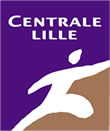

 |
The Fourth International Conference on Advances in Computer-Human Interactions ACHI 2011 February 23-28, 2011 - Gosier, Guadeloupe, France |
|
| Details: |
ISBN: 978-1-61208-117-5 |
|
||||||||||||||||
All tracks/topics are open to both research and industry contributions.
Tracks:
INTER: Interfaces
Graphical user interfaces; Intelligent user interfaces; Adaptive user interfaces; Multi-modal user interfaces; Context-based interfaces; Virtual reality and 3D interfaces; Speech and natural language interfaces; Interfaces for collaborative systems; Interfaces for restricted environments; Internationalization and reflections of culture on interface design; Interfaces for disadvantaged users; Interface specification and design; Interface prototyping; Interface testing; Interface evaluation; Interface generators and other tools for developing interfaces; Data visualization; Visualization techniques; Interactive visualization
OUI: Organic user interfaces
Interface-oriented materials and devices; Physical and digital representation; Sensing and display technologies; Rollable and foldable displays with tactile properties; Skin-based input; Analog input interaction design; Flexible display technologies; Functional-based display forms; Flexible-computing and curve computer interactions; 3D continuous display interfaces
HAPTIC: Haptic interfaces
Fundamental of haptic interactions; Tangible user interfaces; Bidirectional information flow ; Haptography; Haptic feedback and control; Bodyware (embedded sensors; flexible structures, associative memories, actuation and power systems); Magnetic levitation haptic interfaces; Kinetic motion-based interaction; Kinetic motion and haptic design; Mindware (learning, adaptation, head-hand coordination, bimanual coordination; discovering affordance, interaction and imitation); Language of motion / Gesture annotation; Interfaces with kinetic properties; Sensor actuator design, development and evaluation; Linear haptic display; Fingertip haptic display; Pen based force display; High bandwidth force display; Quality of experience model for haptic interactions; Haptics rendering;
SYSTEMS: Interactive systems
DEVICES: Interaction devicesHighly interactive systems; Intelligent agents and systems; Adaptive systems; Context-aware systems; Multi-user multi-interface systems; Collaborative systems; Computer-supported cooperative work; Distributed information spaces; Communicators and advisory systems; Interaction through wireless communication networks
General input and output devices; Virtual reality input and output devices; Interaction devices for immersive environments; Shareable devices and services; Mobile devices and services; Pervasive devices and services; Small displays; Very large displays; Tangible user interfaces; Wearable computing; Interaction devices for disadvantaged users; Interaction devices for computer games
DESIGN & EVAL: Interaction & interface design & evaluation
Interface metaphors; Interaction styles; Interaction paradigms; Requirements specification methods and tools; Analysis methods and tools; Design methods and tools; Evaluation paradigms; Evaluation methods and tools; Evaluation frameworks; Scenarios; Task analysis; Conceptual design; Physical design; Information architecture; Information design for websites; Guidelines and heuristics; Experience design; Environmental design; Ethnography; Contextual design; Service design;
MODELS: Principles, theories, and models
Cognitive models; Conceptual models; Mental models; Frameworks for cognition; Model-based design of interactive systems; Formal methods in human-computer interaction
USER: User modeling and user focus
Usability and user experience goals; User testing; User modeling; User profiling; Predictive models (e.g., for user delay prediction); Human perceptible thresholds; User support systems; Psychological foundations for designing interactive system; Human information processing; Digital human modeling; Engineering psychology; Ergonomics; Hearing and haptics; Affective computing
PARADIGMS: Traditional and emerging paradigms
Interaction paradigms; Mobile computing; Wearable computing; Location-aware computing; Context-aware computing; Ubiquitous computing; Pervasive computing; Transparent computing; Attentive environments; Virtual reality; Augmented reality and tangible bits; Immersive environments; Human-based computation; Visual languages and environments; End-user programming; Hypermedia advances and applications; New visions of human-computer interaction
ACCESS: Usability and universal accessibility
Interaction and interface design for people with disabilities; Interaction and interface design for the young and the elderly; Universal access and usability; Usability engineering; Usability testing and evaluation; Usability and internationalization
HUM-ROBOTS: Human-robot interaction
Fundamentals of human-robot cooperation; Cognitive models of human-robot interaction; Adaptable autonomy and knowledge exchange; Autonomy and trust; Awareness and monitoring of humans; Task allocation and coordination; Human guided robot learning; User evaluations of robot performance; Metrics for human-robot interaction; Long-term interaction robotics; Health and personal care robotics; Social Robotics; Multi-modal human-robot communication; Robot intermediaries; Experiments and applications
HUM- AGENTS: Agents and human interaction
Principles of agent-to-human interaction; Models for human-agent interaction; Social persuasion in human-agent interaction; Designing for human-agent interaction; Socially intelligent agents and the human in the loop; Agents for human-human interaction; Agent-based human-computer-interaction; Human cooperation and agent-based interaction; Human interaction with autonomous agents Agent-based human-robot interaction; Human and artificial agents emotional interaction
SOCIAL: Social aspects of human-computer interaction
Societal implications of human-computer interactions; Social computing and software Online communities Weblogs and other community building tools Online support for discovery and creativity; Tool support for discovery and innovation Expressive and attentive interfaces and environments Affective aspects of human-computer interaction Emotional design
GAMES: Computer games and gaming
Computer game technology; Computer game engineering; Foundations of computer game design and development; Development processes and supporting tools; Management aspects of computer game development; Architectures and frameworks for computer games; Game-based training and simulation; Serious games; Multi-user games; Online games; Online gaming; Game theories; Audio, video and text in digital games; New computer games and case studies; Performance improvements in computer games; Social impact of games and gaming
EDUCATION: Human-computer interaction in education and training
Interactive systems for education and training; Online and communications support for education and training; Interfaces, interactions and systems for distance education; Software tools for courseware development and delivery; Collaborative systems for teaching, studying and learning; Handheld mobile devices for education and training; Advisory and recommendation systems Techniques and tools for information localization, retrieval & storage; Web annotation systems; Case studies and applications
MED APPS: Applications in medicine
Interactive systems for medical applications; Interactive systems for telemedicine; Interactive systems for telehealth; Interactive systems for telepathology; Interactive systems for telecardiology; Interactive systems for telesurgery; Interactive personal medical devices; Digital imagery and visualization frameworks; Role of colors and color imaging in medicine; Multidimensional projections with application to medicine; Data mining and image retrieval techniques for medical applications; Imaging interfaces and navigation; Internet imaging localization, retrieval and archiving; Video techniques for medical images; Internet support for remote medicine; Computer-controlled communications for medical applications; Medical informatics; Software and devices for patient monitoring; Interactive software for therapy and recovery
TELECONF: Teleconferencing
Fundamentals for teleconferencing; Platforms for teleconferencing; Devices for teleconferencing; Videoconferencing, Web Conferencing; Performance in teleconference applications; Real-time aspects in teleconferencing; Privacy and security in teleconference applications; QoS/SLA for teleconferencing applications; Teleconferencing services; Business models for teleconferencing
APPLICATIONS: Other domain applications
Interactive interfaces and systems for scientific applications; Interactive interfaces and systems for engineering applications; Interactive interfaces and systems for business applications; Interactive interfaces and systems for activities in arts & humanities; Interactive interfaces and systems for scientific research; Other applications of interactive interfaces and systems





